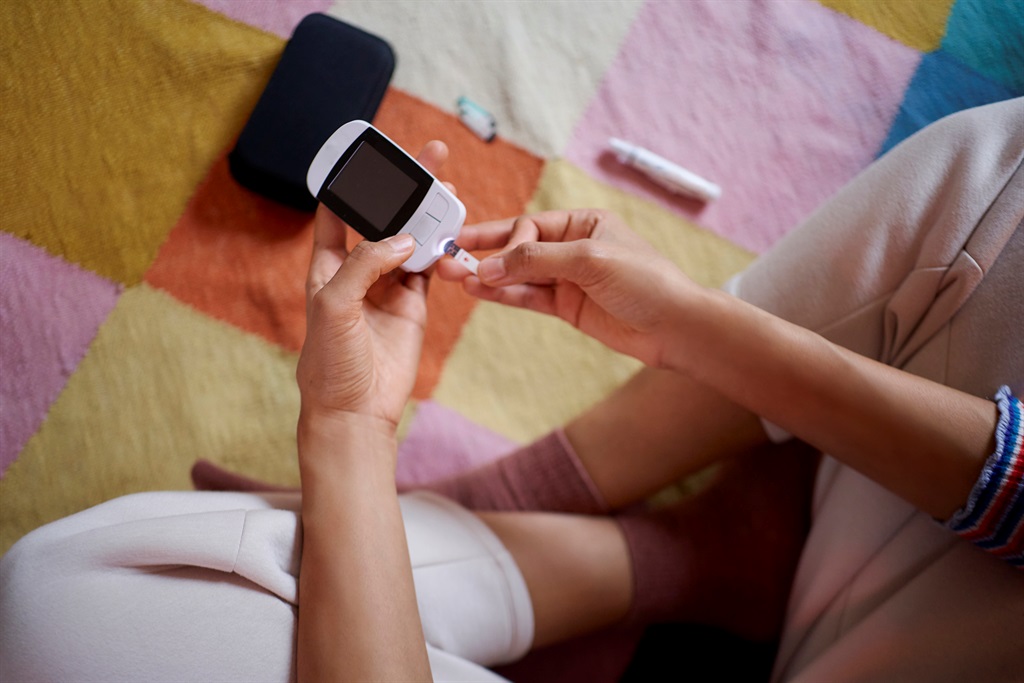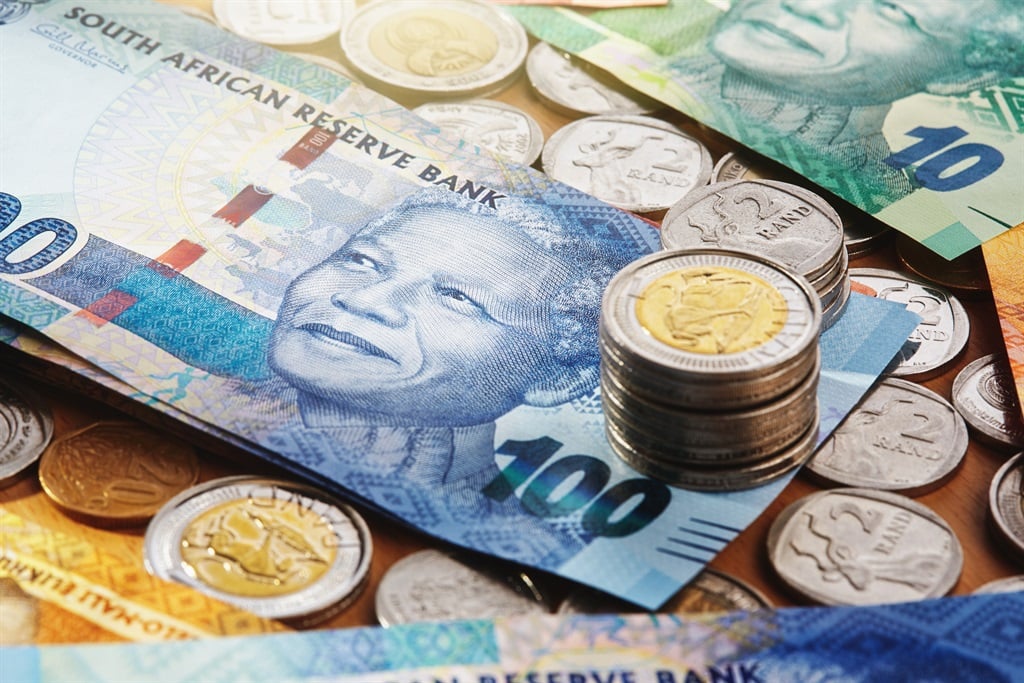
Since May this year, the health department has had to ration how many injection pens filled with human insulin, for the treatment of diabetes, it can give each clinic or hospital. (Iuliia Burmistrova/Getty Images)
- What happens when a pharmaceutical company decides to stop making lifesaving medication because it’s no longer profitable enough?
- Pharma giant Novo Nordisk cited “capacity limitations” as the reason for not bidding for a new contract, which started in May, to supply the health department with human insulin pens.
- Yet demand for its newer diabetes and weight-loss drugs – which they sell for much more than insulin – has skyrocketed over the past few years.
What happens when a pharmaceutical company decides to stop making lifesaving medication because it’s no longer profitable enough?
Since May this year, the health department has had to ration how many injection pens filled with human insulin, for the treatment of diabetes, it can give each clinic or hospital.
An injection pen consists of a pre-filled tube of insulin set in a plastic casing. A dial for measuring out a dose is at the back of the casing and a single-use needle is fitted at the front end. The pens are easy to use because it makes a “click” sound as the dial is turned past marked numbers on the tube to measure out the right dose.
The health department’s predicament is because the pharmaceutical company Novo Nordisk, which has been supplying stock for the past three years, didn’t put in a bid for the new three-year contract for this treatment, which was to start in May.
When Bhekisisa asked about the company’s reason for this, vice-president and general manager for the South African operation, Sara Norcross, cited “capacity limitations“.
READ | ‘I couldn’t find it anywhere’: Ozempic shortage in South Africa taking a toll on diabetics
They let the health department know in October last year that they won’t be putting in a new tender for pens, she says, but that they will still supply human insulin – in vials.
Between 2020 and 2022, the number of prescriptions for drugs called glucagon-like peptides, which are used for blood sugar control and also double up as weight-loss medicines, increased 300% in the United States alone.
In the US, Novo Nordisk’s three brands of these medications come with a hefty price tag.
One of their injectable brands, Ozempic, costs about $936 (R17 100) per month; the other, Wegovy, sells for about R24 700 a month.
ALSO READ | Ozempic is in the spotlight but it’s just the latest in a long and strange history of weight loss drugs
The company also makes the medicine as a pill, called Rybelsus, which costs R17 000 for a month’s supply.
Together, these three brands accounted for two-thirds of the company’s roughly R390-billion revenue in 2023.
Ironically, were it not for diabetes, these medicines would never have been developed.
“The [human insulin] shortage shows the direction pharmaceutical companies are going in – [it’s] where the money is. This time around, people have options, but what happens next time around when there’s none?” asks Candice Sehoma, advocacy adviser of Doctors without Borders.
Plan B
When someone’s pancreas doesn’t make any, or enough, insulin (a hormone), they have too much sugar in their blood.
This leads to a condition called diabetes, and many of these patients need to inject a lab-made form of the hormone to help lower their blood sugar to a healthy level. (Because the medication mimics how the body’s natural sugar-control hormone works, it’s called human insulin.)
The “options” Sehoma refers to stems from the situation not being a complete stockout. Injectable insulin treatment will remain available in the public sector, says Khadija Jamaloodien, the health department’s head of procurement.
However, the alternatives – medication that comes in a small glass bottle and which the user has to draw up manually in a syringe or pens that deliver a different type of insulin – are more cumbersome to use or more expensive, and therefore fewer people who rely on state healthcare will be able to get convenient treatment.
READ MORE | IN THE SPOTLIGHT: Diabetes a leading killer in SA…but we don’t know who has it or where they are
Novo Nordisk was the only company contracted to supply South Africa with human insulin, whether in injection pens or in vials.
The health department says to manage the situation, they have sourced a small supply of human insulin pens and ones with a different formulation of insulin, for the elderly, young children and people with vision problems.
Other patients, though, will have to switch to drawing up insulin from a vial or learn to use a different type, which will mean they have to check their blood sugar levels daily and possibly also change how much insulin they have to inject.
Jamaloodien says the reason for the supplier not choosing to tender for a new contract was not directly communicated to the health department.
“It’s not that obvious, but we can infer from their actions that they’re prioritising other more profitable products.”
Money, money, money
Novo Nordisk sells a pen of human insulin to the government for about R30 each. That means that from the close to 13.7 million pens the state bought between 2021 and 2024, the pharma company earned almost R415 million.
To buy pens filled with the alternative type of insulin, from the pharmaceutical supplier Sanofi, it costs the health department between about R51 and R73 a shot.
For the roughly 270 000 units the state ordered, the manufacturer therefore got about R19 million.
Three companies – Novo Nordisk, Eli Lilly and Sanofi – control 95% of the insulin market in poorer countries. Although there are also other insulin manufacturers in the world, due to the patents held by the “Big Three”, the smaller companies need a licence from them to make the products.
This means the three companies “can set prices as high as they want”, says Doctors Without Borders, which has led to a lawsuit in the US against the drugmakers and three businesses that negotiate what patients pay for their medicine, for alleged excessive pricing and unfair business practices.
The might of a pen
With injection pens filled with human insulin soon to disappear from public clinics or hospitals in South Africa, many patients will have no option but to switch to filling their syringes from a vial, even though eight out of 10 people across 38 countries – which included many from poorer regions – prefer pens, a Doctors Without Borders report shows.
People will still get their insulin, says Jamaloodien, but the delivery method will be different and more inconvenient.
Shiara Pillay, a 29-year-old project manager from Cape Town who’s been using insulin pens for about 10 years, says these devices are easier to use than having to fiddle with filling a syringe manually from a glass container.
She recalls that she “definitely broke a few vials and [had] bent needles [as a school child] because [they] are difficult to travel with”.
Pens are also more discreet because you can inject yourself anywhere without people noticing, but people tend to stare when you use a syringe in public, she says.
Because syringes take longer to prepare for injection (for example, you have to get the vial ready, use the syringe correctly and ensure that there aren’t any air bubbles in the liquid) and the user having to judge from the markings on the barrel what the exact amount is that they’re drawing up, using insulin from a vial can be difficult, says head of endocrinology at Groote Schuur Hospital, Joel Dave.
For some people – like those with poor eyesight or the elderly, whose hands might not be so steady anymore – it could also be dangerous.
The body needs a stable amount of sugar in the blood at all times to ensure that its cells always have enough energy. If your blood sugar level is too high, you need insulin to lower the amount of glucose in the blood. But, if your blood sugar level drops too low – for example, if someone injected too much insulin – it can lead to a coma or even death.
Injecting too little insulin has the opposite effect: blood sugar levels remain high, which in the long run can cause serious harm to your kidneys (and so your body can’t get rid of waste) or damage your nerves.
Although the health department did receive bids for injection pens that contain a different formulation of the sugar-control hormone, called insulin analogues, Jamaloodien says because they’re more expensive than the human insulin pens, it’s difficult to supply all diabetes patients with these options.
Moreover, the make-up of insulin analogues is different from that of human insulin (to make it work faster or stay in your body longer) and so when or how someone has to take their shot is different.
So even if a patient is familiar with using an injection pen, they will still have to learn to use the new type of medicine correctly, explains Dave.
“When you use human insulin, you should take it about 30 minutes before you eat, whereas insulin analogues [newer formulations that work faster] can be injected, preferably, 5–10 minutes before a meal or within 20 minutes after eating. If you take it [a rapid-acting analogue] too early, your blood sugar could drop low because it works quickly.”
A sign of the times
For diabetes patients who have to switch to vials and syringes for their insulin fix, the move puts them at least 10 years back from when human insulin pens were first introduced in South Africa to deal with their illness.
The situation is a repeating pattern of global health inequalities that leave poorer countries with the short end of the stick, says Sehoma.
People in European countries have more access to insulin pens, with up to nine out of 10 having started using insulin pens by 2008. But in poorer regions, a 2019 survey of diabetes care facilities in which 37 countries took part, showed that roughly eight out of 10 children and young people used vials and syringes even though almost three-quarters of them preferred pens.
We live in a world where facts and fiction get blurred
Who we choose to trust can have a profound impact on our lives. Join thousands of devoted South Africans who look to News24 to bring them news they can trust every day. As we celebrate 25 years, become a News24 subscriber as we strive to keep you informed, inspired and empowered.








Recent Comments